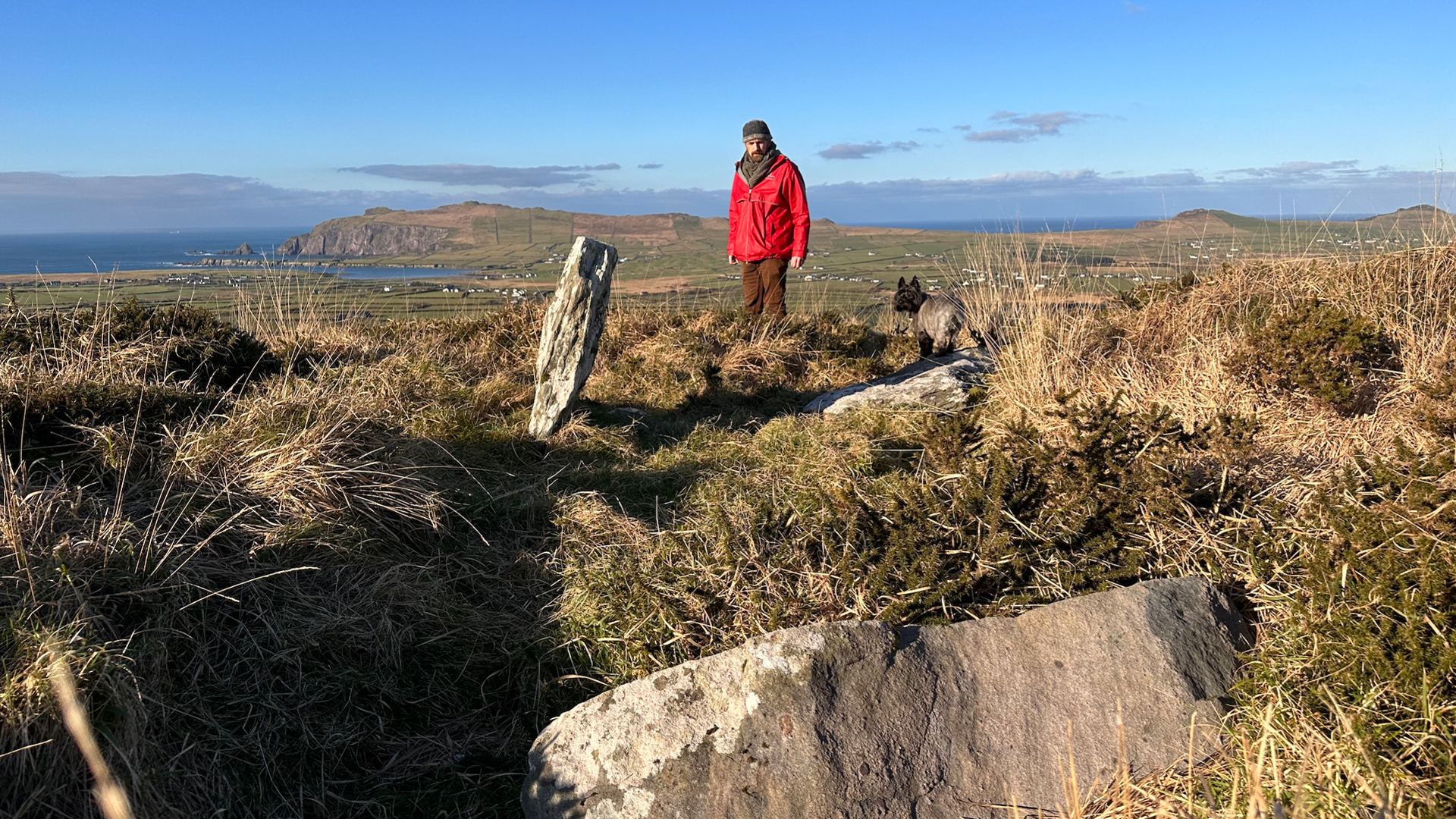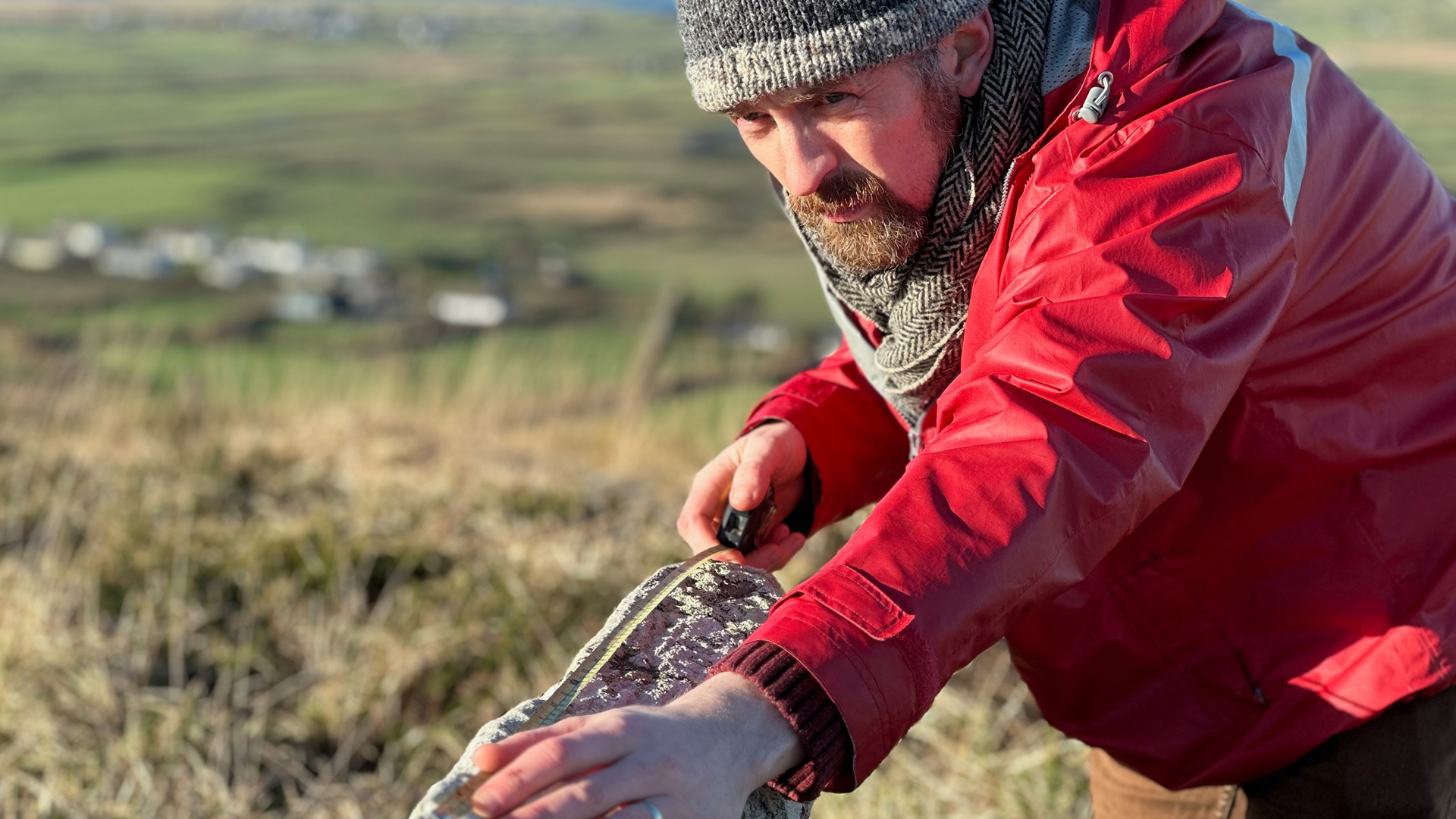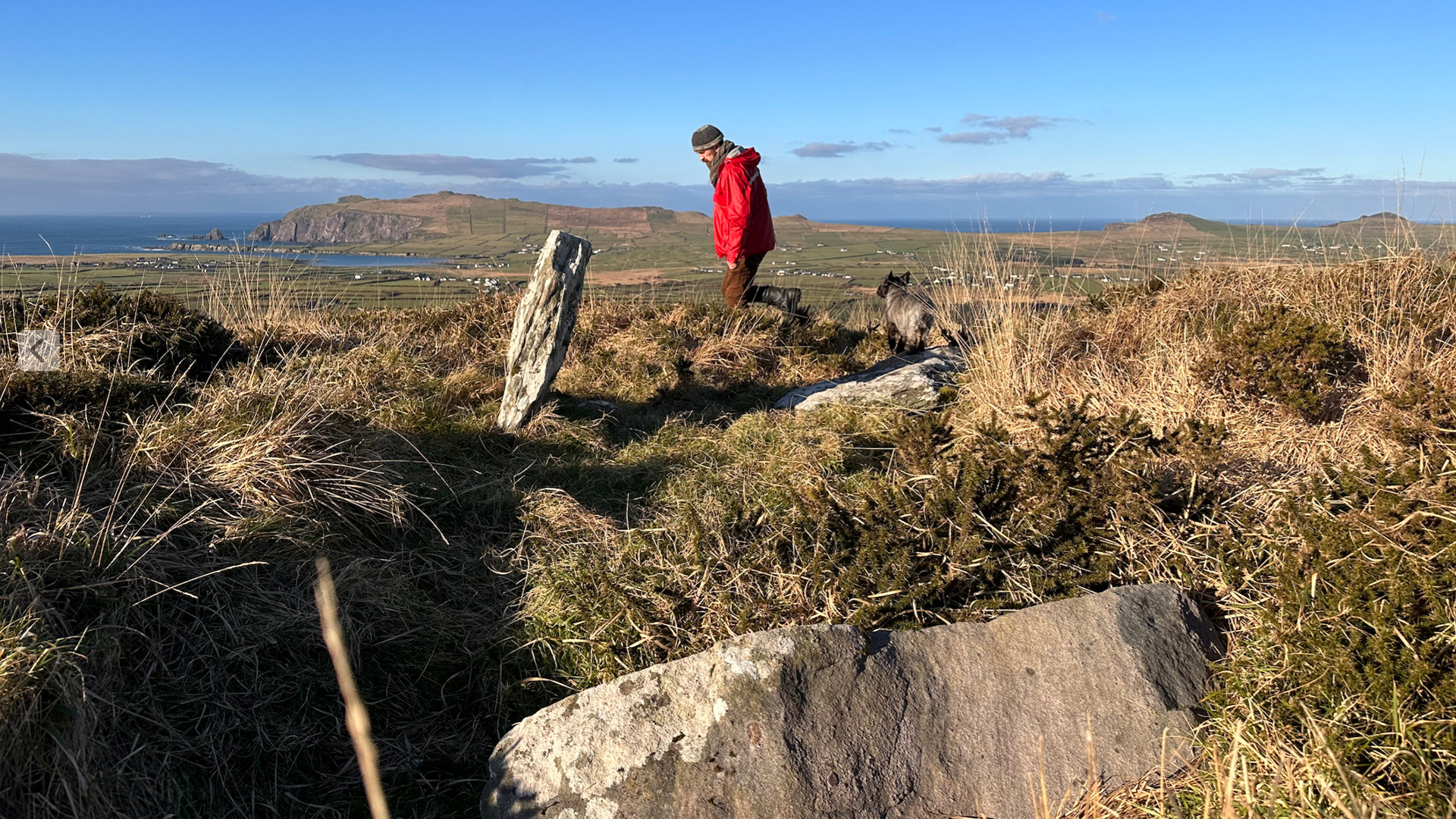
An archaeologist in Ireland has discovered an ancient megalithic tomb — one that was seen and sketched in the 19th century but then lost for almost 200 years.
Local scholar Billy Mag Fhloinn, an archaeologist and folklorist with Sacred Heart University in the Irish town of Dingle, found the tomb with the help of photogrammetry, a technique in which photographs are digitally pieced together to create a virtual 3D model that can be rotated and examined in detail.
Mag Fhloinn lives in a house below the hill where he rediscovered the tomb, near Ballyferriter, a village at the tip of the Dingle Peninsula in the far southwest of Ireland. Over the past few years, he has scoured the surrounding landscape with his camera, looking for the tomb, which was reportedly destroyed a few years after it was last seen in 1838.

In September, while creating a photogrammetric model from his photographs of a possible site, he noticed that the shape of one of the stones he had seen a few days earlier was similar to one in the 19th-century drawing.
"I rotated one of the stones on the screen, and I noticed that it matched one of the stones in the illustration from 1838," he told Live Science. "So I thought I was on the right track then."
Related: Famous Irish tomb yields a surprise — a king born of brother-sister incest
The site was inspected in December by Mag Fhloinn and an archaeologist from Ireland's National Monuments Service, and they confirmed that it is the 4,000-year-old tomb known as "Altóir na Gréine" ("the Altar of the Sun" in Irish).
Ancient tomb

Mag Fhloinn explained that the tomb was visited and sketched in 1838 by an English aristocrat named Georgiana Chatterton. Roughly 14 years later, however, in 1852, an antiquarian named Richard Hitchcock reported that the tomb had been "broken and carried away," presumably for use of its stones in a building.
In the 170-odd years since Hitchcock's report, it was assumed that nothing was left there and that the location was "lost" — until the site was found again by Mag Fhloinn. He told Live Science that just one of the ancient stones was still standing, but the recent inspection detected at least three more large stones buried under the earth and scrub at the site.
It appears the structure was a "wedge tomb" — a megalithic style, common in Ireland at the time, that featured a large box of upright stones covered by a sloping capstone.
The style marks it as dating to the "Chalcolithic," or Copper Age — a period between 4,500 and 4,000 years ago in Ireland when copper was starting to be used in Ireland, just after the Stone Age but before the Bronze Age.
Remote site
It's unlikely that any human remains will be found at the tomb site, Mag Fhloinn said; cremated human bones have been discovered at wedge tombs elsewhere in western Ireland, but the ground at Altóir na Gréine was probably too waterlogged for any to have survived. Based on other tombs, however, it is likely that the cremated bones of several people had been interred there, he said.
Some Irish megalithic tombs were oriented to the midwinter sunrise, and its name — as recorded by Chatterton — implies Altóir na Gréine may have had a similar alignment. The tomb was built on a spine of the hill, with striking views of the nearby countryside and sea; Mag Fhloinn's next task will be to find an easy way to visit the site.
"The way I found it was by climbing over barbed-wire fences, but not everybody wants to do that," he said.







